Control of Terrain in Iraq: July 27, 2014
July 27, 2014 -
ISW is placing a watch on Hit as an area that ISIS likely desires to control.

ISW is placing a watch on Hit as an area that ISIS likely desires to control.
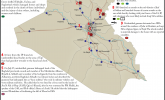
ISIS efforts to control critical infrastructural like the Hamrin Dam is worrisome, as ISIS has previously utilized control over the Fallujah dam to counter the ISF and prevent water supplies from reaching southern Iraq.
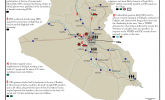
Hundreds of members of Iraqi Shi’a militias and their supporters gathered in central Baghdad to participate in parades celebrating Quds Day, an Iranian-backed annual event expressing solidarity with Palestine.
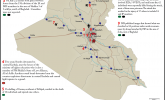
ISIS continued to deploy VBIEDs in hardened areas in Baghdad, this time in Karrada, central Baghdad, indicating both the capability and the intent to focus efforts on the Iraqi capital.
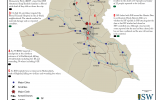
ISIS continued its campaign against Peshmerga-controlled terrain and infrastructure, gaining control of the Badush Dam, 20 km northwest of Mosul.

On July 23, ISIS took control of the Badush dam (under construction) and nearby facilities northwest of Mosul after Peshmerga forces withdrew from the area.
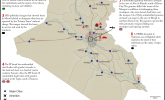
Iraqi Shi’a militias continue to escalate their campaign. The attacks in Basra are reminiscent of the killing of Iraqi Sunni tribal leaders in the city in November 2013 that ISW assessed to have been carried out by Iraqi Shi’a militias.
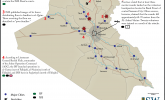
The Islamic State of Iraq and al-Sham (ISIS) continues to consolidate its governance presence in Mosul and western Iraq.

Daquq in Kirkuk province is home to the Imam Zain al-Abdin shrine and is a mixed area. On July 20, Iraqi Shi’a volunteers were reportedly flown in from the south in order to provide protection from possible ISIS advances in the area.
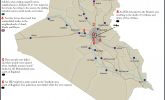
The situation in the vicinity of Baghdad continues to intensify. ISIS has emplaced IEDs in the southern belts of Baghdad, areas that it has previously targeted with IED or suicide attacks.